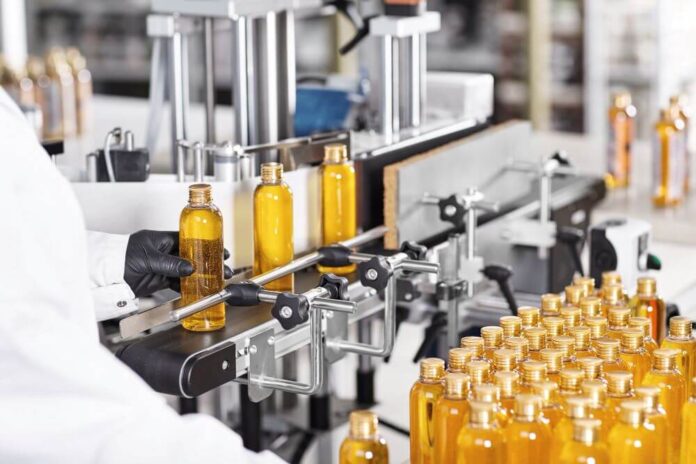In every bottling line, each step plays a role in delivering a finished product. Filling may get the spotlight, but without secure caps, no bottle can leave the facility. That is where capping machines come in. These machines ensure every container is sealed properly, consistently, and at scale.
Whether you are packaging beverages, sauces, oils, cosmetics, or cleaning solutions, a reliable capping machine is essential. It keeps your line running efficiently and ensures the safety and quality of your product. Below, we break down what a capping machine is, why it is critical to bottling operations, and how to choose the right one for your needs.
What Is a Capping Machine
A capping machine is a piece of equipment used to apply caps to bottles or containers. It replaces manual labor with a mechanical process that ensures precision and speed. Most bottle caps require a specific torque or pressure to create a proper seal, and these machines deliver that control.
There are several kinds of bottle capping machines, each suited for different applications:
- Screw cappers: twist caps onto threaded bottle necks using rotating motion
- Snap cappers: apply downward force to snap caps in place
- Press on cappers: push non threaded caps onto containers without rotation
- Spindle cappers: use spinning wheels to tighten caps as bottles move through the machine
- Chuck cappers: grip each cap with a mechanical chuck to screw it on precisely
Some are semi automatic, requiring an operator to load each bottle, while others are fully automatic and integrated into a continuous production line. The right machine depends on your cap type, container design, and production volume.
Why Bottle Capping Machines Matter
Strong and Reliable Seals
Seal integrity is essential for shelf life, safety, and leak prevention. Manually applied caps often suffer from inconsistent torque. Some may be too loose and leak during transit. Others may be overtightened and damage the cap or bottle.
A bottle capping machine ensures that every cap is applied with the correct pressure and alignment. This consistency reduces product loss and ensures that each bottle meets quality standards. In regulated industries like food and pharmaceuticals, that level of control is a must.
Faster Production
Manual capping is slow. A person can only apply so many caps per minute. That bottleneck holds up the rest of the production line. A cap machine speeds up the process dramatically, keeping pace with filling, labeling, and packing.
Some capping machines can handle up to 200 bottles per minute, depending on the model and product. This allows you to scale your operation without increasing labor costs. When speed matters, automation delivers.
Consistent Presentation
Inconsistent caps do more than cause leaks—they hurt your brand. A crooked or loose cap looks unprofessional, even if the product inside is perfect. Customers notice. Retailers notice. And small visual flaws can lead to returns, complaints, or reduced trust.
A bottle capping machine eliminates this risk. It delivers clean, aligned, repeatable results that help your product look polished and shelf ready. Uniform packaging sends the message that you care about quality from start to finish.
Labor Savings
Manual capping is physically demanding and repetitive. It increases the risk of strain and slows down production as workers fatigue. A capping machine reduces the need for hands on labor, allowing team members to focus on other areas like inspection, packing, or machine monitoring.
Automating the capping process also reduces human error. With fewer mistakes, you save money on rework and waste while improving output.
Flexibility for Different Products
Many modern bottle capping machines can handle a wide range of container sizes and cap types with minor adjustments. This flexibility is especially useful if you package multiple product lines in the same facility.
Quick changeover features allow operators to switch between products with minimal downtime. If your business grows or diversifies, your capping machine can grow with you.
Choosing the Right Capping Machine
When selecting a bottle capping machine, consider the following:
- Cap type: Is it screw on, snap on, press on, or tamper evident?
- Bottle shape and size: Tall bottles may need different handling than short or irregular containers.
- Speed requirements: Match the machine’s throughput to the rest of your line.
- Automation level: Decide whether you need semi automatic or fully automatic equipment.
- Integration: Look for systems that easily connect with your filling and labeling machines.
It is also wise to work with a manufacturer or supplier that offers customization, technical support, and replacement parts. A good capping machine is a long term investment, and the right support makes a difference.
Final Thoughts
Capping is one of the most important steps in your packaging process. It ensures that your product arrives sealed, safe, and ready for market. A capping machine brings consistency, speed, and efficiency to that task.
Whether you are launching a small production line or upgrading an existing one, a quality bottle capping machine can pay for itself quickly through labor savings, reduced waste, and improved product quality. As demand grows and production scales, having the right cap machine in place is not just helpful—it is essential.
